Berwickshire is one of the less densely populated areas in the Scottish Borders.
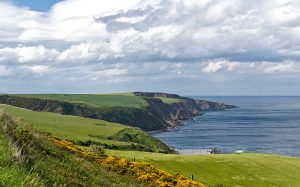 From Lauder in the West to the North Sea and the East Coast, Berwickshire covers a surprisingly large area and includes spectacular countryside stretching from the wilds of the Lammermuirs to the lower Tweed valley and the spectacular cliffs and rugged scenery on the coast.
From Lauder in the West to the North Sea and the East Coast, Berwickshire covers a surprisingly large area and includes spectacular countryside stretching from the wilds of the Lammermuirs to the lower Tweed valley and the spectacular cliffs and rugged scenery on the coast.
Berwickshire offers a number of distinct benefits, not least good road and rail connections to Edinburgh and Newcastle, with the main East Coast line at Berwick giving high-speed access to London in a journey time of little over three hours.
Lauder is the first Borders town as you travel down from Edinburgh on the A68. Recent years has seen the town expand with an influx of buyers looking for country living within a short drive of the city. Lauder offers good places to eat and drink, including the Spotty Dog Bistro and the Flat Cat Gallery, and is also home to the distinctive red sandstone turreted Thirlestane Castle, a local landmark.
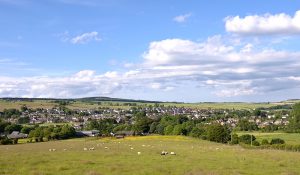
Further down the road is Earlston, one of the larger Borders villages with local shops and a central location within easy reach of the main Borders Towns. Tradition has it Thomas the Rhymer hailed from these parts and references to his tales of fairies and local folklore are everywhere and perhaps continue to influence the strong dramatic and musical tradition for which the local High School is renowned.
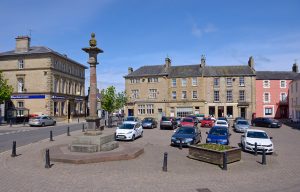 Duns is the ‘County Town of Berwickshire’ and having lived in the Duns area for over twenty years, I have fond memories of both the friendly people and facilities on offer. Duns Castle was famously the location for scenes used in the film Mrs Brown, while the Nature Reserve at Duns Estate offers year round interest and woodland walks. The town also has a range of traditional shops and buildings around the Market Square with plenty of parking and a relaxed friendly place to visit with plenty of places to park.
Duns is the ‘County Town of Berwickshire’ and having lived in the Duns area for over twenty years, I have fond memories of both the friendly people and facilities on offer. Duns Castle was famously the location for scenes used in the film Mrs Brown, while the Nature Reserve at Duns Estate offers year round interest and woodland walks. The town also has a range of traditional shops and buildings around the Market Square with plenty of parking and a relaxed friendly place to visit with plenty of places to park.
Nearby villages include Gavinton and Swinton, a historic village with a village green made famous by the ‘twelfth man,’ ie the monument in the middle of the football pitch. The Wheatsheaf Hotel is a popular eatery overlooking The Green. Gavinton lies to the west of Duns, off the Greenlaw road, and benefits from little through traffic and a close-knit community with an active village hall and many attractive properties.
Further west is Greenlaw, a well-located and old established village with the former town hall a prominent landmark in the centre. One of the larger Borders villages, Greenlaw is centrally located on the A697, which connects to to Coldstream and the A68 at Carfraemill.
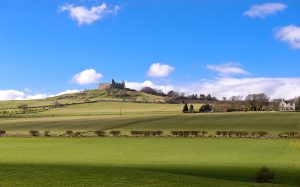 The nearby hamlet of Hume sits on a ridge with another famous landmark, Hume Castle, a part-built castellated folly that can be seen from far and wide and keeps a look out over the Tweed Valley and south to Kelso. Further west on the low road from Greenlaw, is the popular village of Gordon, which has a primary school, village pub and bistro and nearby community woodland.
The nearby hamlet of Hume sits on a ridge with another famous landmark, Hume Castle, a part-built castellated folly that can be seen from far and wide and keeps a look out over the Tweed Valley and south to Kelso. Further west on the low road from Greenlaw, is the popular village of Gordon, which has a primary school, village pub and bistro and nearby community woodland.
Coldstream is one of the larger Berwickshire towns-the first town over the Tweed from England. Famous as the spiritual home of the Coldstream Guards, which had its barracks over the Border in Berwick, Coldstream has a strong local community, local shops and good facilities – not least The Hirsel Estate, at one time the family seat of former prime minister, Alex Douglas Home, with a famous bird sanctuary, woodland walks and fine parkland golf course. Mid-way between Coldstream and Kelso lies the village of Birgham, which has superb views over the Tweed and a unique community-owned village pub and restaurant. Inland from here is Leitholm, another lineal village with a popular pub at the heart of community life.
 Chirnside and Allanton are satellite villages to the east of Duns – Chirnside having grown around the nearby paper mill and Allanton with a history of tailors and a fine pub restaurant in the Allanton Inn. A few miles north of Chrnside, Auchencrow has another fine eatery and watering hole in The Craw Inn.
Chirnside and Allanton are satellite villages to the east of Duns – Chirnside having grown around the nearby paper mill and Allanton with a history of tailors and a fine pub restaurant in the Allanton Inn. A few miles north of Chrnside, Auchencrow has another fine eatery and watering hole in The Craw Inn.
Moving east, the village of Reston is actively campaigning to reopen the former railway station that runs through the village. Well connected by road, Reston is an easy commute from Edinburgh via the A1.
Travelling south is Ayton, a village set back from the A1 that has local facilities and is only a ten-minute drive to Berwick on Tweed and the main line station. Within the heart of the village, Ayton Castle serves as a tribute to the grandeur of past times.
Berwickshire’s key attraction is a stretch of rugged coastline incorporating coves, coastal walks and villages along its route. The main coastal town of Eyemouth was built around its harbour and fishing industry that remains an active industry even today. The town is also popular during the holiday season and offers a good range of shops and other historical attractions.
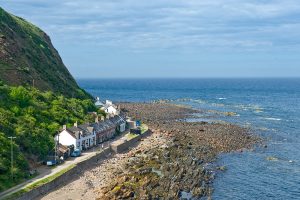 Nearby villages include St Abbs and Coldingham, which has winding streets reminiscent of Poldark country, while the nearby village of Cove and its sheltering harbour tucked below towering cliffs is another reminder of the past. These days Coldingham beach is popular with surfers, while St Abbs Head, with its protected status and marine reserve, is also an internationally famous location for scuba diving.
Nearby villages include St Abbs and Coldingham, which has winding streets reminiscent of Poldark country, while the nearby village of Cove and its sheltering harbour tucked below towering cliffs is another reminder of the past. These days Coldingham beach is popular with surfers, while St Abbs Head, with its protected status and marine reserve, is also an internationally famous location for scuba diving.
Berwickshire is well worth exploring and should you decide to extend your stay and/or relocate, there is no shortage of properties and locations to choose from.
Ron Hastings – November 2017
Share this Post
